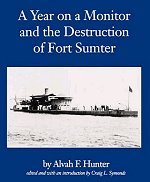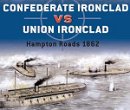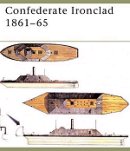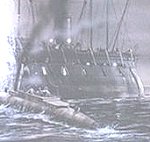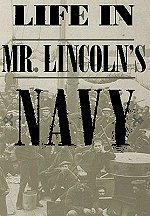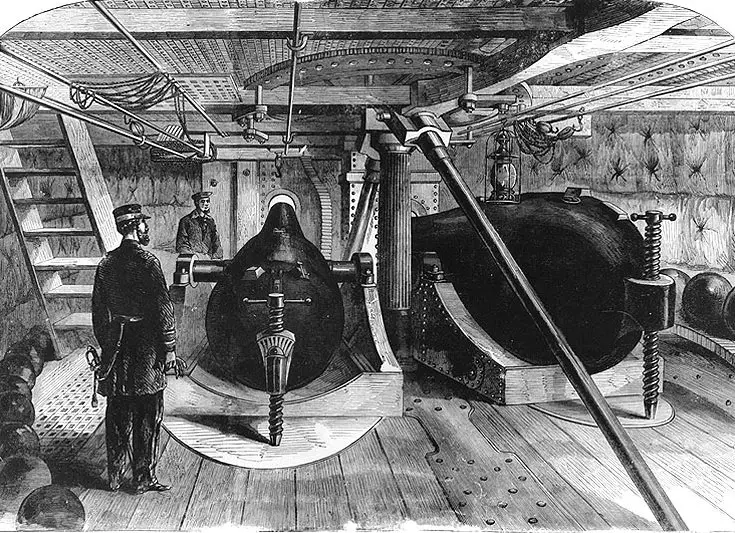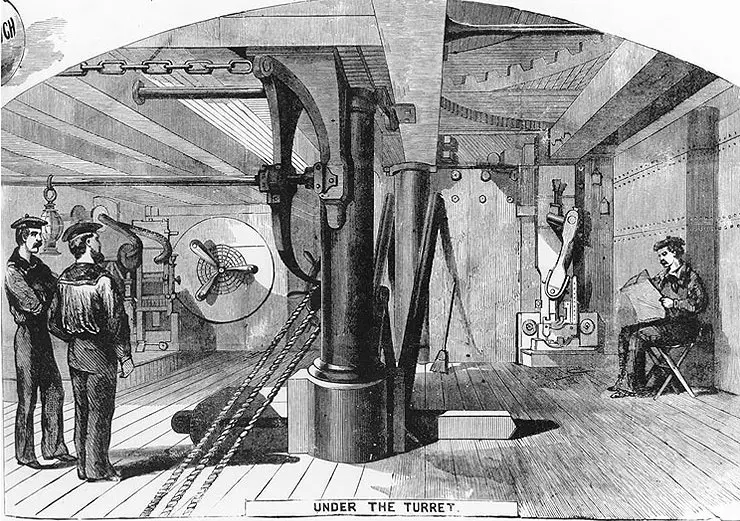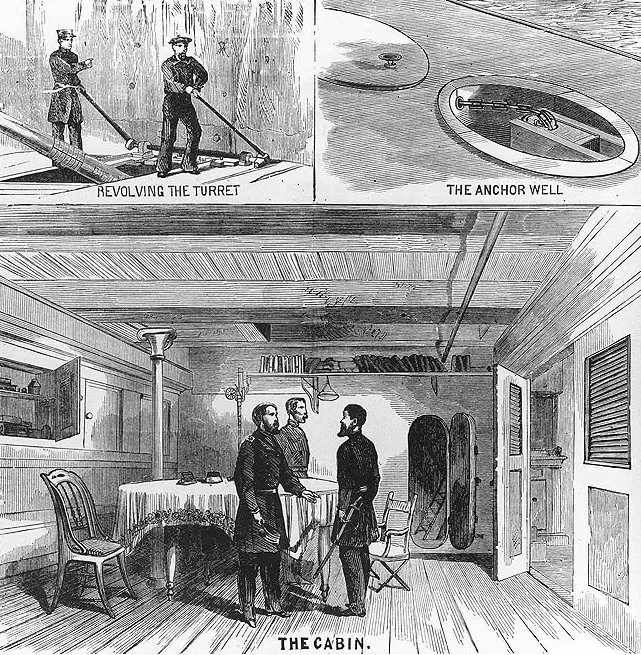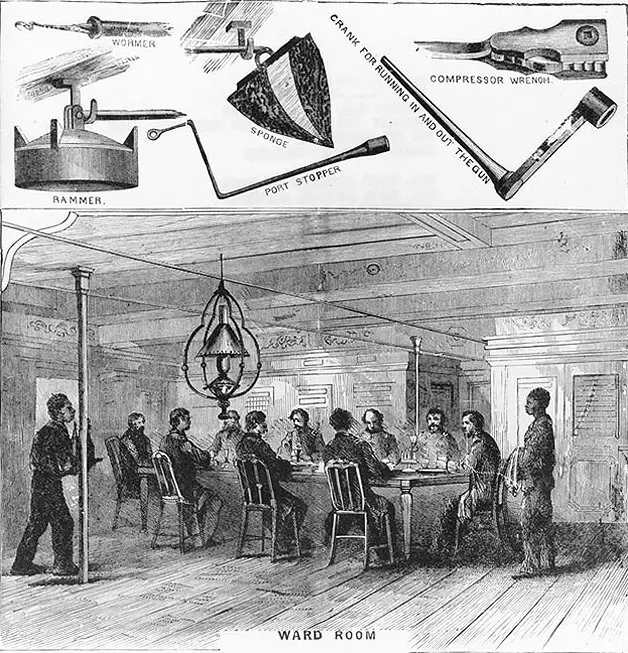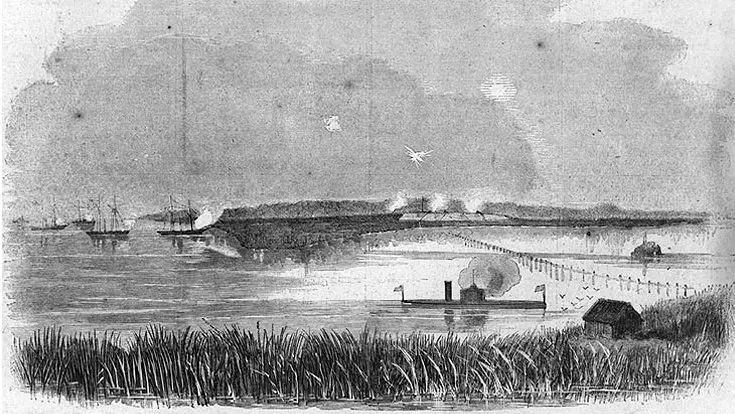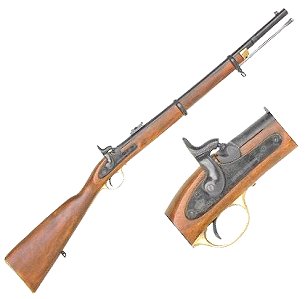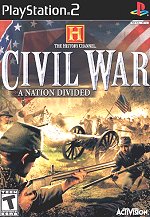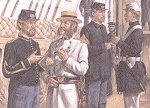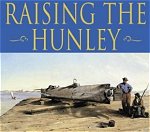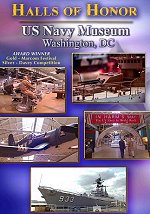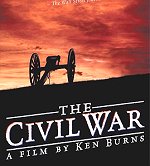USS Montauk (1862-1904)
USS Montauk , a 1335-ton Passaic class monitor built at Greenpoint, New York, was commissioned in December 1862 under the command of Commander John L. Worden . She arrived at Port Royal, South Carolina, in mid-January 1863 to join the South Atlantic Blockading Squadron. Late in the month she bombarded Fort McAllister, Georgia, in a test of her combat abilities. At the end of February, Montauk returned to Ft. McAllister to shell and destroy the Confederate privateer Rattlesnake and early in the next month covered another bombardment of the fort by three of her sister monitors. She was hit several times by enemy cannon fire in these actions and also received damage when a mine (or "torpedo" in the terminology of the day) detonated near her hull just after she had attacked the Rattlesnake .
On 7 April 1863, Montauk was one of nine ironclads, including seven monitors, that made a close-range bombardment of Fort Sumter, in Charleston harbor, S.C. During the summer of that year, she participated in a series of attacks on the Charleston harbor fortifications that led to the capture of Battery Wagner in September. Montauk continued to serve in the vicinity of Charleston until February 1865, when she moved north to take part in operations on the Cape Fear River, North Carolina.
While stationed off Washington, D.C., in late April 1865, Montauk served as the platform for an examination of the body of John Wilkes Booth, the murderer of President Abraham Lincoln. She also was a temporary prison for some of Booth's co-conspirators. Decommissioned later in 1865, the ship was placed in what turned out to be permanent lay up at the League Island Navy Yard, at Philadelphia, Pennsylvania. USS Montauk remained there for nearly four decades and was sold for scrapping in April 1904.
Washington Navy Yard, District of Columbia
Four monitors laid up in the Anacostia River, off the Washington Navy Yard, circa 1866.
Ships are (from left to right): USS Mahopac , USS Saugus , USS Montauk (probably); and either USS Casco or USS Chimo . Photo mounted on a stereograph card, marked: "Photographed and published by Kilburn Brothers, Littleton, N.H.".
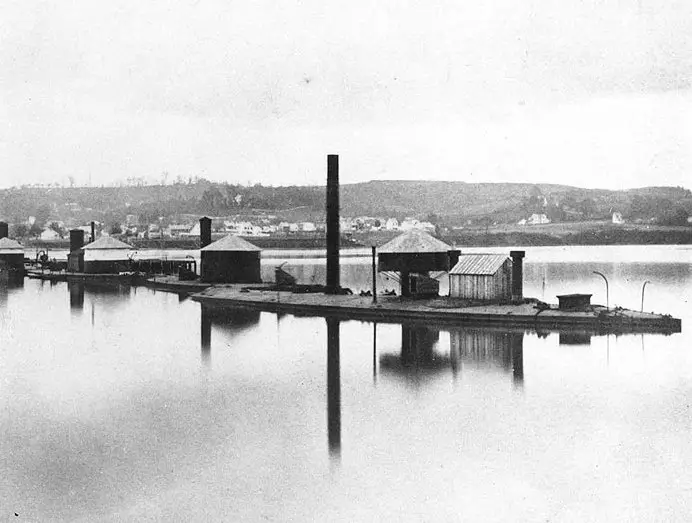
Ships moored in the Anacostia River off the Yard's waterfront, after the end of the Civil War, about 1865.
The large twin-turret monitor in the center is Miantonomoh , with the smaller monitor Montauk tied up alongside her, to the left. In the left distance are the "light draft" monitor Chimo and the twin-turret monitor Tonawanda . The former Confederate ironclad Stonewall is beyond them.
In the right distance is the Yard's western shiphouse. Ship at right is probably USS Resaca .
The original print is mounted on a carte de visite produced by Christimo, 45 Rua de Quitanda, Rio de Janeiro, Brazil.
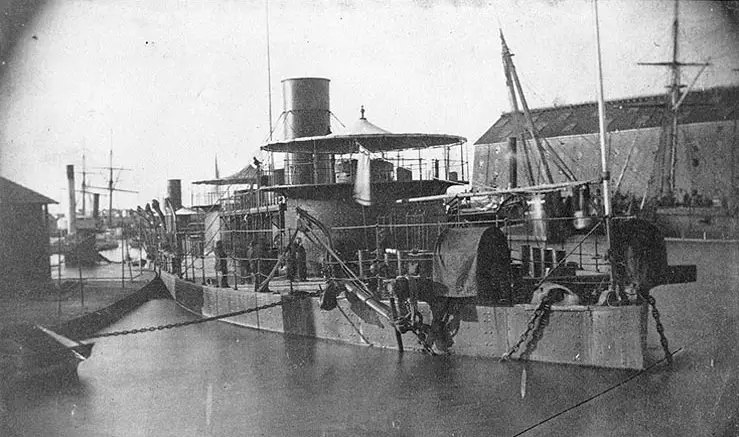
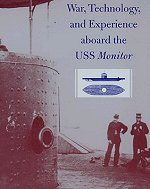
War, Technology, and Experience aboard the USS Monitor
The experience of the men aboard the Monitor and their reactions to the thrills and dangers that accompanied the new machine. The invention surrounded men with iron and threatened their heroism, their self-image as warriors, even their lives
Kindle Available
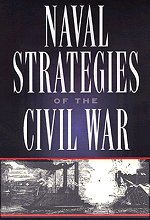
Naval Strategies of the Civil War: Confederate Innovations and Federal Opportunism
Compare and contrast the strategies of the Southern Secretary of the Navy, Mallory, against his rival in the North, Welles. Mallory used technological innovation and the skill of individuals to bolster the South's seapower against the Union Navy's superior numbers
